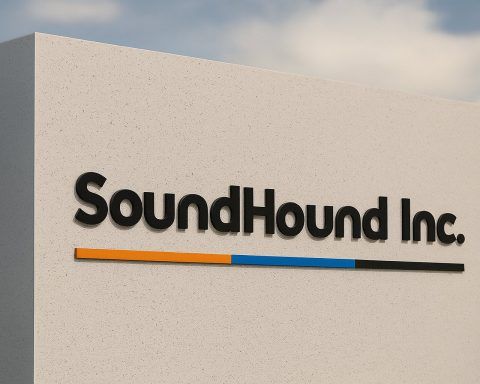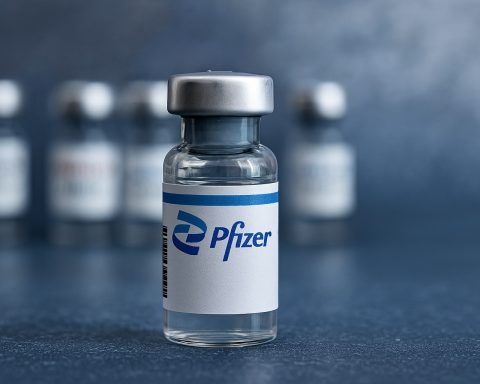- Wall Street Turns Bullish: Multiple analysts have upgraded or initiated Buy ratings on Halliburton (NYSE: HAL) in recent days, including a new Buy initiation by Rothschild & Co Redburn with a $35 price target (implying ~36% upside) [1]. Firms like Argus, Jefferies, Goldman Sachs, and TD Cowen have all raised their price targets for Halliburton after its latest earnings, signaling a shifting narrative toward optimism.
- Oil Services Near a Cycle Bottom: Industry experts believe the oilfield services sector is bottoming out after a rough 2025. Rothschild’s analysts note that weaker U.S. shale spending and flat international drilling activity squeezed results this year, but they argue the sector is approaching the “trough” of its earnings cycle and set to recover as global upstream investment picks up by 2027 [2] [3]. In other words, U.S. oil services may be down but not out, with a new upcycle on the horizon. Global upstream capital expenditures are forecast to grow ~3% annually from 2025 to 2030 after nearly a decade of stagnation [4], which should boost demand for drilling and completion services.
- Strong Q3 Results and Cost Cuts: Halliburton’s Q3 2025 earnings beat expectations on revenue, with $5.6 billion in sales (ahead of estimates around $5.4B) and robust margins, driven by efficient operations and strength in the Middle East [5]. A one-time $478 million charge hit net income (resulting in a small $18 million GAAP profit), but adjusted net income was a healthy $496 million [6]. The company is aggressively cutting costs – idling equipment and trimming budgets – targeting $100 million in savings per quarter going forward [7]. Halliburton’s CEO Jeff Miller said the company is “enhancing operational efficiency” and focusing on returns to navigate the downturn [8].
- Pivot to New Markets (AI & Automation): As traditional drilling slows, Halliburton and peers are expanding into high-growth areas like data center power and automation. Halliburton formed a venture with VoltaGrid to supply on-site natural gas power for AI data centers, after seeing surging demand from cloud providers. “The demand for power and for AI is like nothing I’ve ever seen,” Halliburton CEO Jeff Miller remarked, calling the trend a “long-term growth opportunity” for the company [9]. Halliburton also signed a deal with Shell to deploy its new ROCS offshore well technology (an automated “umbilical-less” system for deepwater drilling) – a move showcasing Halliburton’s innovation in cutting-edge oilfield tech. Analysts say such strategic moves into power generation and automation are “clear avenues for growth” as the energy landscape evolves [10].
- Shifting Sentiment and Forecasts: Investor sentiment toward Halliburton is markedly improving. The stock trades around $27 per share as of early November 2025, roughly flat year-to-date, but analysts see significant upside ahead. The consensus price target has climbed into the low $30s [11], and Rothschild’s ambitious $35 target underscores confidence in a 2026–2027 earnings rebound. Wall Street expects Halliburton’s earnings to bottom in 2026 and rise in 2027 as global drilling activity recovers [12]. Notably, high-profile investor Michael Burry (of “The Big Short” fame) disclosed a new stake in Halliburton this quarter [13], a sign that some savvy investors are positioning for a turnaround. Risks remain – oil prices hovering in the low $60s per barrel and volatile shale spending – but Halliburton’s strong market position, improved capital discipline, and new growth initiatives have experts predicting it will outperform as the next investment cycle begins [14].
Oilfield Services: “Down But Not Out” After a Tough Year
Halliburton, one of the world’s top oilfield services companies, has faced a challenging environment in 2025. U.S. shale producers cut back on drilling budgets as oil prices slipped (West Texas crude has been trading around the low-$60s [15]), and international projects largely stalled. This downturn hit Halliburton’s North America-centric business hard – the company even slashed its 2025–26 earnings forecasts by up to 25% earlier in the year amid the shale slowdown [16]. Industry-wide, rig counts fell and profit margins tightened, prompting talk of an extended slump for oilfield service providers.
However, recent analysis suggests the worst may be over. In a new report, analysts at Rothschild & Co Redburn contend that the sector is near an earnings trough, not a dead-end [17]. They point to several signs of a coming rebound. Global oil demand remains on an upward trajectory, and the natural decline rates of existing oil fields are accelerating – meaning producers will soon need to invest in new wells just to maintain output [18]. At the same time, national oil companies (e.g. in the Middle East) are expanding capacity, which should kickstart a new upstream investment cycle in the next couple of years [19]. Rothschild’s team expects worldwide upstream spending to start rising again by 2027, at roughly 3% annual growth through 2030 [20]. After nearly ten years of underinvestment, even modest growth in capital expenditures could revitalize demand for services like drilling rigs, pressure pumping (fracking), and well completions.
In other words, oilfield services may be down but not out. “These stocks already reflect a lot of bad news,” the Rothschild analysts note, arguing that Halliburton and peer SLB (formerly Schlumberger) are trading at “trough multiples on trough earnings” [21]. SLB, for example, is valued about 30% below its historical average on an EV/EBITDA basis, indicating pessimism is fully priced in [22]. As the cycle turns, the upside could be compelling. Halliburton is well placed to benefit from a rebound in global drilling and completion activity “after a sharp slowdown in North America,” according to the Rothschild report [23]. The bank set a $35 price target for HAL stock, reasoning that improving fundamentals could drive roughly 35% total returns over the next year [24]. In their view, both Halliburton and SLB have the makings of comeback stories as the oil industry’s investment engines rev back up.
Analysts Grow Optimistic: Upgrades and Higher Targets Pile Up
It’s not just Rothschild Redburn. A chorus of Wall Street analysts has turned bullish on Halliburton this fall, reinforcing the sense that the narrative is shifting. “Investors are clamoring for power-generation exposure… these moves are driving valuation upside,” observed James West of Melius Research, referring to oilfield contractors’ pivots into new markets [25]. In late October, Halliburton surprised to the upside with its third-quarter results, prompting a wave of positive analyst actions.
Within days of the earnings release, at least half a dozen research firms boosted their outlook for HAL. For example, Jefferies raised its price target to $32 (from $30) and reiterated a Buy rating, while Argus Research upped its target to $31 (from $26) and maintained its Buy stance [26]. Goldman Sachs also bumped its target to $28 (from $25), and Barclays (which had been more cautious) lifted its target to $25 (from $20) after the earnings beat [27]. Even smaller independent firms joined in – Zephirin Research increased its HAL target to $30 (from $28) on November 3, citing a “medium risk” Buy case [28].
The most aggressive call came from TD Cowen’s analyst Marc Bianchi, who in October raised his Halliburton target all the way to $38 (from $35) while reiterating a Buy [29]. Bianchi’s target implies over 40% upside and was among the highest on the Street. It reflects confidence that Halliburton’s earnings will snap back strongly by 2027, in line with robust demand for energy services. Indeed, UBS noted that Halliburton’s Q3 performance was boosted by “Gulf of Arabia activity” and efficiency gains [30] – a sign that international markets (and the Middle East in particular) are picking up some slack even as North America slows. As Halliburton expands its global reach, several analysts expect international revenue growth to support the company until U.S. shale spending recovers.
Crucially, Halliburton’s management is also taking proactive steps that analysts applaud. The company has prioritized free cash flow and capital discipline – for instance, scaling back growth capex and returning cash to shareholders via dividends and buybacks. “Early signs of capital discipline and free cash flow growth position [Halliburton and SLB] for outperformance as the next investment cycle begins,” the Rothschild report stated [31]. In practical terms, Halliburton is tightening its belt during the downturn: it highlighted plans to idle some fracking equipment and cut overhead costs, aiming to save $100 million per quarter through these measures [32]. Such actions should preserve profitability even if near-term revenue is flat. RBC Capital analysts flagged these cost reductions and Halliburton’s new power-generation ventures as key positives that will “benefit” the company going forward (RBC kept an Outperform rating) [33].
The upshot is a far more upbeat consensus on Halliburton’s future. According to GuruFocus data, Halliburton now carries an average rating of Overweight/Buy, and the mean price target has climbed to roughly $29–30 per share [34]. That consensus target has been nudged upward as firms incorporated Halliburton’s better margins and the industry’s improving outlook. In fact, Halliburton’s fair value estimate (via Morningstar) was recently revised slightly higher – from about $26.5 to $27.0 – reflecting “improved optimism” about the company’s future cash flows [35]. While $27 is roughly where the stock trades now, many analysts clearly believe the real upside lies ahead as the cycle turns. With heavyweights like HSBC upgrading Halliburton to Buy (with a $30 target) earlier in the year [36] and J.P. Morgan reiterating overweight with a $30 target [37], it’s evident that sentiment has warmed considerably compared to the start of 2025.
Even outside of sell-side research, notable investors are showing confidence. This quarter, famed value investor Michael Burry revealed that his fund Scion Asset Management took a new bullish position in Halliburton [38]. Burry is known for contrarian bets, and his interest suggests he sees Halliburton as a mispriced opportunity – perhaps believing the market is underestimating the pending recovery in oil services. Such insider moves and top-tier analyst calls have helped put Halliburton back on the radar of the broader investing public as a potential rebound play.
Halliburton’s Q3: Resilience Amid Headwinds
Part of the bullish case for Halliburton stems from how the company navigated the current downturn. Third quarter 2025 results, announced on October 21, showed resilience despite the tough environment. Halliburton’s revenue came in at $5.6 billion, not only up 2% sequentially from Q2 but also above analyst expectations (around $5.4B) [39]. This was achieved even as international revenues faced pressure – meaning Halliburton offset softness in some regions with strength in others. In fact, North America revenue rose 5% quarter-over-quarter to $2.4B [40], thanks to pockets of drilling activity (notably in the U.S. Gulf of Mexico and select land basins where Halliburton has high market share). Strong execution was evident in margins as well: the company delivered a 13% adjusted operating margin in Q3 [41], indicating solid cost control.
However, the headline net income was deceptively low at $18 million [42]. Investors learned that Halliburton took a substantial one-time charge (approximately $478 million) related to asset impairments and other restructuring costs. Excluding that non-recurring hit, adjusted net income was about $496 million for the quarter [43] – a much more robust profit figure that reflects the company’s true earnings power. Halliburton’s CEO Jeff Miller reassured that these moves (like writing down older equipment and trimming excess costs) were positioning the company for stronger performance ahead. “We remain committed to technology leadership and maximizing returns,” Miller said, emphasizing that Halliburton is using the downturn to become leaner and more efficient [44].
The company’s proactive strategy includes aligning capacity with demand (hence the idling of some frack fleets) and focusing on higher-margin opportunities. Halliburton has also adjusted its capital budget to be more conservative until the market recovers [45]. These actions impressed analysts – UBS noted Halliburton’s “efficiency gains” helped drive the Q3 earnings beat [46], and others have mentioned that the cost cuts should support earnings going forward. Essentially, Halliburton demonstrated that even in a soft market it can remain profitable and generate free cash flow. That bodes well for its ability to capitalize when the tide turns and activity picks up again.
Encouragingly, Halliburton’s leadership is not just cutting costs; they’re also doubling down on innovation and new revenue streams. An example is the recent Shell partnership for ROCS technology. In early November, Halliburton signed a framework agreement with Shell to deploy its Remote Open-close Subsea (ROCS) system – a groundbreaking method for umbilical-less deepwater well completions [47]. This technology, developed with Norwegian firm Optime, can streamline deepwater drilling operations by eliminating bulky hydraulic lines, thereby saving time and money in offshore projects [48] [49]. The Shell deal will roll out ROCS on multiple wells after a successful pilot in the Gulf of Mexico, and it positions Halliburton as a leader in next-gen offshore services. Analysts see such developments as proof of Halliburton’s technical prowess. The company’s century-long operational expertise in oilfield services has continuously produced innovations that help oil producers lower their cost per barrel, GuruFocus notes – a key reason Halliburton has maintained its top-tier status in the industry [50].
Another bright spot is Halliburton’s venture into powering AI data centers, which ties the oilfield giant into the booming tech economy. Halliburton’s 20% stake in VoltaGrid – a provider of mobile gas-fired power units – allows it to serve energy-hungry data center clients. Just weeks ago, VoltaGrid announced a massive 2.3 gigawatt project to supply electricity for Oracle’s upcoming AI cloud facilities, with Halliburton as a partner [51]. This is an entirely new market for Halliburton, leveraging its expertise in turbines and power systems. “This is a long-term growth opportunity for both VoltaGrid and Halliburton,” CEO Jeff Miller said of the Oracle data center deal [52]. It’s part of a broader trend: oilfield contractors pivoting into AI infrastructure as a source of growth. Rival Baker Hughes, for example, is selling gas turbines to data centers and saw a record $4+ billion in orders for its industrial tech segment in Q3 [53]. Halliburton’s move is slightly different – focusing on distributed power generation – but it taps into the same tailwind of surging electricity demand from AI. Melius Research’s James West calls these forays “clear avenues for growth” given the unprecedented need for power; investors, he says, are eager for exposure to this trend [54].
Outlook: Rebound on the Horizon, But Mind the Risks
Looking ahead, the consensus is that Halliburton’s toughest days of this cycle may soon be in the rearview mirror. Forecasts call for a bottom in earnings in 2026, followed by a meaningful upturn in 2027 [55] as global oil companies increase spending to meet rising demand. Halliburton’s international business is expected to lead the recovery initially, driven by national oil company projects in the Middle East, Latin America and Asia. Notably, Middle Eastern producers are raising production capacity, which translates into multibillion-dollar contracts for drilling and completions – an area Halliburton specializes in. As one of the largest service providers globally, Halliburton is in prime position to win a good share of that work, especially after proving its value with cost-saving technologies and reliable execution. This international upswing, combined with an eventual stabilization and rebound in North America, could lift Halliburton’s revenues and profits substantially over the next 2–3 years. Rothschild & Co. predicts Halliburton’s earnings will “recover significantly” by 2027 thanks to these tailwinds [56].
Market sentiment has shifted accordingly. Where investors once fretted about oversupply of fracking equipment and shrinking shale budgets, they are now starting to price in the recovery cycle. Halliburton’s stock has climbed off its summer lows (it dipped into the low $20s) and is now hovering in the upper-$20s. The company’s valuation metrics suggest room for upside: its forward price/earnings ratio is around 18, which is near multi-year lows despite the growth ahead [57]. Halliburton’s price-to-sales ratio is only about 1.0 [58], indicating the stock is not expensive relative to its revenues. Meanwhile, institutional investors (funds and large holders) own about 86% of Halliburton’s shares [59] – a sign that big money sees it as a core energy holding. With improving free cash flow and a decent dividend yield, Halliburton offers an appealing mix of value and cyclical growth potential, advocates say.
That said, risks linger on the road to recovery. The biggest wildcard is the price of oil itself. If crude oil were to stay stuck in the low-$60s or fall further, U.S. shale producers might continue exercising restraint in capital spending. Halliburton is still heavily exposed to North America (around half of its revenue [60] comes from that market), so a prolonged slump in U.S. drilling would drag on its results longer than anticipated. Additionally, the energy sector is notoriously volatile, and Halliburton’s stock has a beta of about 1.2 (20% more volatile than the market) [61] – meaning any market turbulence or oil price swings can cause outsized moves in HAL shares. Competition remains fierce too: rivals like SLB and Baker Hughes are chasing the same international contracts and new-energy opportunities, which could pressure profit margins if pricing gets competitive.
Investors should also watch Halliburton’s execution on its new ventures. The VoltaGrid power initiative and ROCS technology are promising, but they need to translate into meaningful earnings contributions to truly move the needle. So far, the signs are encouraging – e.g. SLB reported its new Digital & Integration division (including data-center solutions) is its fastest-growing segment, with 11% QoQ growth last quarter [62]. Halliburton will aim for similar success with its projects. CEO Jeff Miller’s enthusiasm for these opportunities is high, and early wins (like the Oracle data center deal and Shell’s ROCS adoption) lend credibility. If these ventures succeed, Halliburton could evolve from a pure oilfield service play into a more diversified energy technology firm, deserving of a higher stock valuation.
Bottom Line: Halliburton enters late 2025 with cautious optimism building around it. The company has endured a tough year of reduced drilling activity, but it managed to stay profitable and even beat expectations through cost discipline and innovation. Now, with a likely oilfield upcycle on the way in the next couple of years, Halliburton appears poised for a comeback. “Halliburton’s strong market position and innovative capabilities provide a foundation for future recovery,” as GuruFocus summed up [63]. The resurgence of global oil investment – modest but meaningful – could reignite Halliburton’s growth engine just as its leaner operations start to pay off. Wall Street analysts are increasingly betting on this scenario, backing the stock with buy ratings and higher price targets. While one should remain mindful of the volatile nature of the oil patch, the prevailing view is that Halliburton is no longer a falling knife but a coiled spring. In short, the oil services giant may have been knocked down, but it’s not out – and 2026–2027 could see this “down but not out” story turn into a robust recovery, rewarding those who got in early on the optimism.
Sources: Halliburton Q3 earnings release and analysis [64] [65]; Rothschild Redburn analyst note via Investing.com [66] [67] and GuruFocus [68]; Reuters industry report on oil services pivot [69] [70]; GuruFocus stock overview [71] [72]; Seeking Alpha/Yahoo Finance news on investor and analyst moves [73] [74].
References
1. www.investing.com, 2. www.investing.com, 3. www.gurufocus.com, 4. www.investing.com, 5. www.marketscreener.com, 6. www.tipranks.com, 7. www.tipranks.com, 8. www.tipranks.com, 9. www.reuters.com, 10. www.reuters.com, 11. www.gurufocus.com, 12. www.investing.com, 13. seekingalpha.com, 14. www.investing.com, 15. www.reuters.com, 16. www.gurufocus.com, 17. www.investing.com, 18. www.investing.com, 19. www.investing.com, 20. www.investing.com, 21. www.investing.com, 22. www.investing.com, 23. www.investing.com, 24. www.investing.com, 25. www.reuters.com, 26. www.marketscreener.com, 27. www.marketscreener.com, 28. www.marketscreener.com, 29. www.streetinsider.com, 30. www.marketscreener.com, 31. www.investing.com, 32. www.tipranks.com, 33. www.marketscreener.com, 34. www.gurufocus.com, 35. m.valueforum.com, 36. finance.yahoo.com, 37. www.marketscreener.com, 38. seekingalpha.com, 39. www.fool.com, 40. ir.halliburton.com, 41. www.tipranks.com, 42. www.tipranks.com, 43. www.tipranks.com, 44. www.tipranks.com, 45. www.tipranks.com, 46. www.marketscreener.com, 47. www.halliburton.com, 48. www.nasdaq.com, 49. www.nasdaq.com, 50. www.gurufocus.com, 51. www.reuters.com, 52. www.reuters.com, 53. www.reuters.com, 54. www.reuters.com, 55. www.investing.com, 56. www.gurufocus.com, 57. www.gurufocus.com, 58. www.gurufocus.com, 59. www.gurufocus.com, 60. www.gurufocus.com, 61. www.gurufocus.com, 62. www.reuters.com, 63. www.gurufocus.com, 64. www.tipranks.com, 65. www.marketscreener.com, 66. www.investing.com, 67. www.investing.com, 68. www.gurufocus.com, 69. www.reuters.com, 70. www.reuters.com, 71. www.gurufocus.com, 72. www.gurufocus.com, 73. seekingalpha.com, 74. finance.yahoo.com















